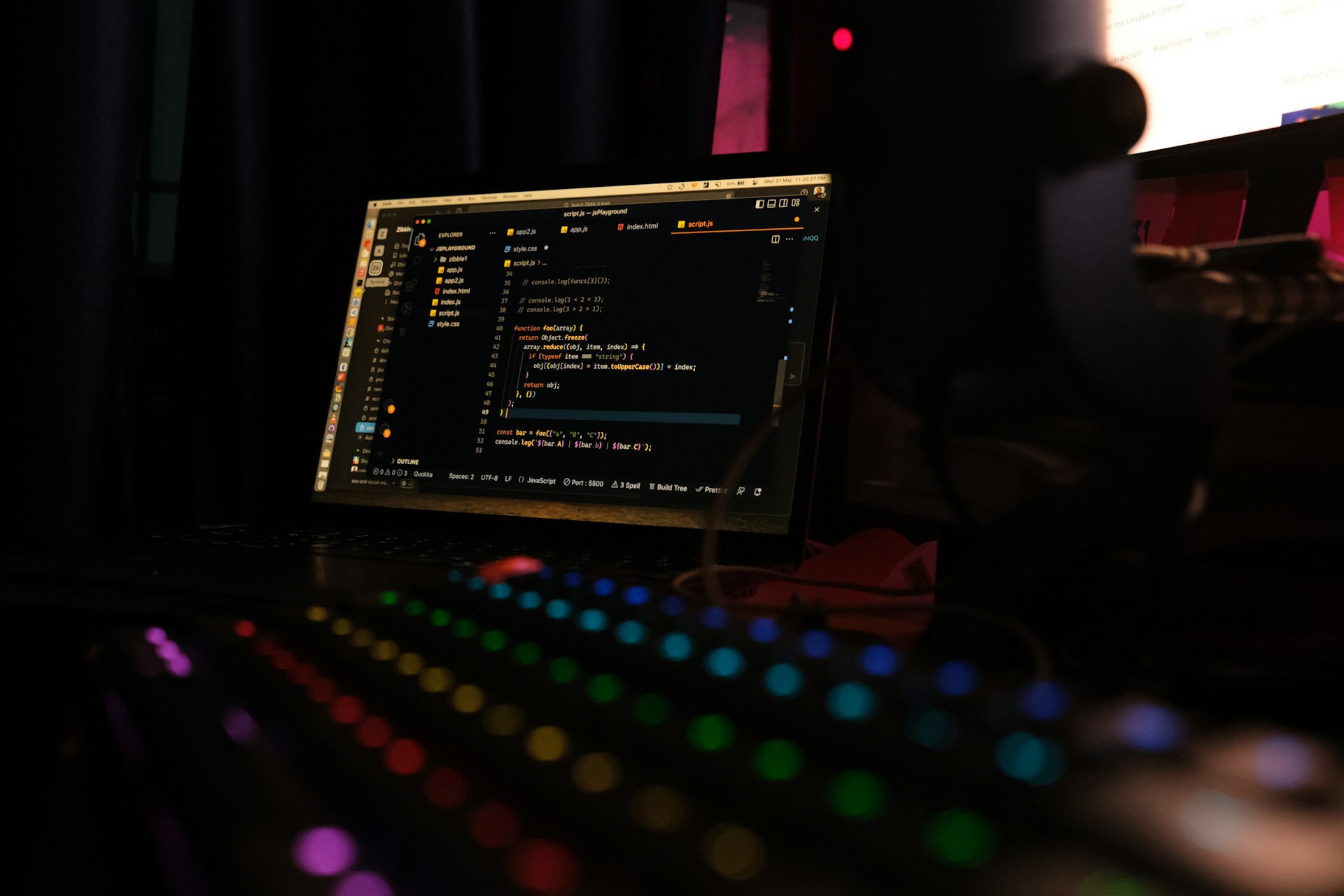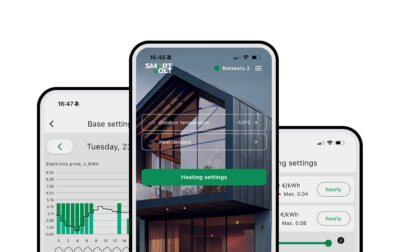React Native vs. Flutter: A strategic comparison for unlocking business success
Intro
React Native vs. Flutter, a rivalry almost as heated as iOS vs. Android. Once you decide to produce a cross-platform application, then one of the most vital questions will be whether you will be able to choose between these tools. Both of them are extremely popular in the tech circle and deliver satisfying results. Still, there are distinctions that can influence the way your final application will perform. What is the actual difference between Flutter and Reach Native and what criteria should guide your decision-making process? Touchlane’s mobile team deep dives into the matter and shares the findings.
React Native – An overview
React Native is a JavaScript-powered framework. It employs React, which is a broadly utilized library for web development, empowering engineers to build successful mobile apps. Its appeal lies in merging the factors that distinguish native development with the simplicity of web development. The produced code can be repurposed across both Android and iOS. When personalized functionality is required, the framework still has the flexibility to implement platform-specific code.
Standout functionalities
- JavaScript at the core. Web programmers have an easier time switching to React Native and the mobile dev niche, given that the framework is driven by JavaScript, which is an extensively recognized language.
- Combining native modules. The framework facilitates the integration of native code developed in platform-dependent languages.
- Assistance from a wide community. With a mature infrastructure, React Native benefits from a vast community that regularly contributes to numerous external resources.

Flutter – An overview
Flutter is another well-liked framework for producing cross-platform applications. In a manner similar to React Native, accelerates the app development cycle and gives programmers a streamlined method for creating and releasing aesthetically appealing, natively compiled apps for multiple platforms.
Standout functionalities
- Fueled by Dart. At its core, Flutter has Dart, which is less common than JavaScript but offers excellent efficiency and features like optional typing.
- Widget-based architecture. Flutter’s architecture is entirely widget-based, meaning every element is a widget. This enables consistent performance across platforms and highly configurable user interface designs.
- Skia graphics engine. Flutter employs the Skia graphics engine to render the UI directly on the canvas, delivering high-speed performance and uninterrupted animations. All this delivers superior performance compared to its cross-platform competitor.

Flutter vs. React Native – Performance comparison
Productivity
By using Ahead-of-Time (AOT) compilation and directly executing native code, Flutter delivers faster load times, smoother animations, and improved efficiency in visually complex applications by eliminating overhead from JavaScript bridges. So, we may say that in terms of Flutter vs. native app performance, it should be nearly identical. Throughout the testing stage, the productivity of a Flutter app can be measured via Flutter performance benchmark tests, with such metrics as frame per second, memory and CPU usage, network performance, and more.
Although React Native offers strong performance as well, bottlenecks can occur due to the JavaScript bridge connecting it to native components. Yet, recent updates, such as the Turbo Native Module architecture, are aimed at improving productivity.
Stability
React Native, with its longer presence, boasts a well-developed ecosystem and proven stability. Businesses can rely on its major updates, which benefit from thorough community testing. However, its use of JavaScript can occasionally lead to difficulties with debugging and ensuring compatibility with the latest versions of iOS and Android.
Despite being relatively new, Flutter has established itself as a stable framework in recent years. Backed by Google, it offers a cohesive experience with an in-house UI rendering engine and framework. This tight integration ensures high stability and consistent UI behavior across different devices.
Speed and simplicity of development
With its wide range of existing components and a thriving ecosystem, React Native is designed for fast development cycles, especially if the programmers who work on the app are already proficient in JavaScript/React. “Hot reloading” offers immediate code changes, speeding up the process further.
Flutter presents a steeper learning curve for programmers who are unfamiliar with Dart. Nevertheless, once mastered, it provides a powerful toolkit for rapid development. Flutter’s features like “hot reload” and an all-encompassing widget library make UI creation both quicker and more intuitive. That said, Dart’s relative rarity as a language might limit the availability of engineers and capabilities for your project.
Popularity and usage
To wrap up this section, we suggest looking at the most recent Flutter vs. React Native statistics concerning the prominence of each framework.
- GitHub stars. Flutter leads with 166k stars, while React Native has 119k stars on GitHub, showing a surge in developers’ and companies’ interest in Flutter.
- Developer survey 2024 by Stack Overflow. Flutter is more popular at 9.4%, compared to React Native’s 8.4%. Additionally, Statista reports that in 2023, 46% of programmers used Flutter in contrast to React Native’s 35%.
- Search interest. Google Trends’ US Flutter search score in the last 12 months ranged from 71 to 97, higher than React Native’s 61 to 100, suggesting greater curiosity and exploration of Flutter by software engineers.

Does Flutter or React Native have a stronger customer base?
Due to its extended market presence, React Native has been embraced by numerous well-known businesses, including Airbnb and Tesla. Developers favor and trust it because of its large worldwide community, well-categorized documentation, and wealth of resources.
React Native-driven mobile apps
- Facebook (React Native’s original creator)
- Instagram (some parts)
- Uber Eats
- Skype.
With big enterprises like Google and BMW utilizing it for their apps, Flutter is experiencing a surge in popularity. Despite being more recent, it has already amassed a sizable customer base thanks to Google’s robust support, exceptional performance, and UI features.
Flutter-powered apps
- Google Ads
- Alibaba (uses Flutter for parts of its mobile application)
- Reflectly (utilizes Flutter for its UI)
- BMW (My BMW app).
Looking for experienced Flutter or React Native developers?
When should you go with Flutter?
So, you have read all the points above but still have no definite decision in mind. At Touchlane, we advise you to reflect on using Flutter in the following contexts:
- You want to release a highly personalized, stunning, and intuitive UI with top graphics quality for both iOS and Android – and do it quickly.
- From a performance perspective, you want to reduce load times of your app and deliver superior performance.
- In terms of upgrade and maintenance, you have long-term plans for your app where maintaining consistent performance, compatibility, and design is critical.
When should you go with React Native?
- Your engineers possess a background in React and JavaScript or your project involves using libraries and tools from the React ecosystem.
- You want to benefit from a proven solution that has been in the market longer than some of its competitors and boast an established ecosystem of tools, as well as strong community support.
- Your program does not need sophisticated or intricate graphics rendering.
Touchlane’s opinion
“As a mobile app developer, I recommend choosing Flutter when your priorities are speed of development and cost efficiency. It is truly a great choice for apps with standard or moderately complex features that do not heavily rely on platform-specific APIs. On the other hand, if your app requires high performance or needs deep integration with native platform features, React Native might be the better fit.
When it comes to animations, if you require truly high-end, intricate animations, native development is the way to go. However, for less demanding or moderately complex animations, Flutter can be a viable and efficient solution.
At Touchlane, we frequently employ Flutter since it gives great results in less time. Our team likes its widget-centric structure and multiple options for personalization. As an example, you may look at one of top Flutter-based projects, Smartvolt.”
Conclusion
There is no definitive answer to which framework is better – Flutter or React Native. Performance- and customization-wise, Flutter may offer slight benefits. However, at the same time, React Native can seem like an equally mature and trustworthy tool. Both of these are stellar picks for launching a cross-platform app and can undoubtedly enrich the development workflow.
Ultimately, your decision should be based on your project’s specs and a clear vision of what your company wants to achieve. If you lack the resources or need an expert consultation, you may require a technical partner to fill in the gap – and give you a professional-level assessment on the matter of React Native vs. Flutter.
RELATED SERVICES
CUSTOM MOBILE APP DEVELOPMENT
If you have an idea for a product along with put-together business requirements, and you want your time-to-market to be as short as possible without cutting any corners on quality, Touchlane can become your all-in-one technology partner, putting together a cross-functional team and carrying a project all the way to its successful launch into the digital reality.
If you have an idea for a product along with put-together business requirements, and you want your time-to-market to be as short as possible without cutting any corners on quality, Touchlane can become your all-in-one technology partner, putting together a cross-functional team and carrying a project all the way to its successful launch into the digital reality.
We Cover
- Design
- Development
- Testing
- Maintenance











